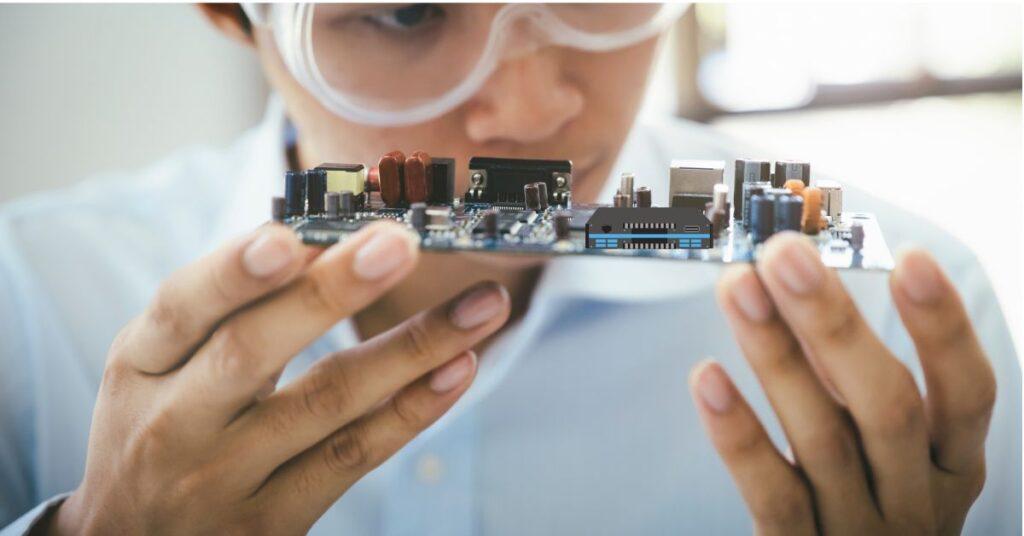Digital Micromirror Device: Digital Micromirror Device is also called DMD, and it is used in many applications. It is a very powerful technology. This article will give you an overview of the world of digital micromirror.
What is a digital micromirror device used for?
What is a digital micromirror device used for
Black is a digital micromirror device (DMD) commonly used in some show and projection technologies. It is a semiconductor-based essentially micro-opto-electromechanical system (MOEMS) consisting of thousands or perhaps millions of tiny micromirrors arranged on a single microchip. These micromirrors can individually manage to reflect light in unique directions, developing pix and patterns.
One of the most popular packages of DMDs is DLP (Digital Light Processing) projectors, which are commonly used in home theaters, school rooms, and industrial settings. In a DLP projector, the DMD chip projects light through the shade wheel and onto the display screen, producing brilliant, sharp pictures and movies.
DMDs are also used in other show technologies, including virtual cinema projectors, where they produce high-resolution and high-contrast pictures for movie theaters.
In addition to projection, DMDs have also found applications in 3D printing, lithography systems for semiconductor production, or scientific contraptions for optical experiments. They are valued for their ability to precisely manipulate light and create specific images and styles, making them flexible gadgets in a variety of optical and imaging applications. German shepherd
2: What is a Digital Micromirror Device?
What is a Digital Micromirror Device?
A digital micromirror device called a DMD is a small chip. These mirrors rotate very fast. They can be controlled digitally; they can change their position on different computer devices.
3: How Does a Digital Micromirror Device Work?
Digital Micromillar Devices Application Devices (DMDS) are advanced technology. They offer an unlimited range of applications in various fields, such as enhancing the movie-viewing experience and medicine. With it, DMDS is making a very significant impact until advancements in the industry occur.
3: Applications of Digital Micromirror Devices (Approx. 500 words)
In DMD, each of these small mirrors can be tilted in two different directions – towards the light source or the light, so it transmits light towards the screen or surface, creating a brighter pixel. When it tilts away from light, it moves light away, creating a darker pixel.
By bending these glasses incredibly fast and accurately, DMDs can create images or patterns on the screen. This sharp tilt and reflection of light is so fast that the eyes see it as continuous motion, like in a movie or video.
Home theater projector
3D printing
Medical imaging
Automotive Head-Up Display
Industrial applications
FAQs for Digital Micromirror Device:
1: Are digital micromirror devices only used in projectors?
NO DMDS has an infinite range of ranges, including 3D blunting medical, imaging automotive head-up displays and industrial processes, and digital micromirror devices are used in many fields.
2: How do digital micromirror devices improve image quality?
Digital micrometers are also called DMDS, which enhance the quality of the image by controlling the reflection of light, which makes the image much better.
3: Can digital micromirror devices be used in consumer electronics?
It’s like they’re often used in consumer projectors.
3: Can digital micromirror devices be used in consumer electronics?
It’s like they’re often used in consumer projectors.
5: What does the future hold for digital micromirror devices?
According to the ongoing research to improve and shorten the technology, there are improvements in the future, which will open more doors to applications.
Conclusion
In the end, the digital micromirror device has left an imprint on the world of imaging technology; this feature of connecting light has made significant progress from entertainment to health protection, and in many fields, such as the evolution of technology, we can expect the transition to DMD technology and innovative applications even if you want a cinema environment in your room. The micromirror device improves good image quality and shapes the experience of seeing the world around us.

